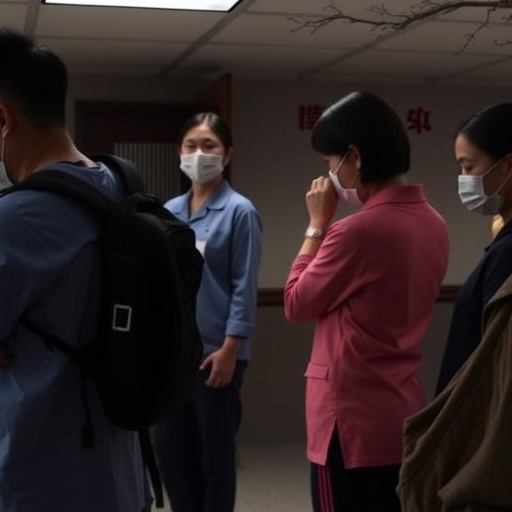When to initiate screening for breast cancer, how often to screen, and how long to screen are questions that continue to spark emotional debates. A new study compares the number of deaths that might be prevented as a result of three of the most widely discussed recommendations for screening mammography. Published early online in CANCER, a peer-reviewed journal of the American Cancer Society, the findings may provide valuable guidance to women and their physicians about choosing a screening regimen.
To uncover insights that might help women make informed choices about mammography screening, researchers led by Elizabeth Kagan Arleo, MD, of Weill Cornell Medicine and New York-Presbyterian, and R. Edward Hendrick, PhD, of the University of Colorado School of Medicine, used computer modeling to estimate the possible effects of three schemes: annual screening starting at age 40 years, annual screening at ages 45 to 54 years and then biennial screening at ages 55 to 79 years, and biennial screening at ages 50 to 74 years.
The investigators estimated how many breast cancer deaths might be prevented with the different screening schemes. The team found that the recommendation of annual screening starting at age 40 would result in the greatest reduction in breast cancer-specific deaths: a nearly 40 percent reduction in deaths due to breast cancer, compared with 23 percent to 31 percent reductions with other recommendations.
"Our findings are important and novel because this is the first time the three most widely discussed recommendations for screening mammography have been compared head to head," said Dr. Arleo. "Our research would be put to good use if, because of our findings, women chose to start annual screening mammography starting at age 40. Over the long term, this would be significant because fewer women would die from breast cancer."
The researchers' modeling also considered risks associated with screening, including callbacks for additional imaging and, in some cases, a needle biopsy, both of which may reveal the absence of breast cancer despite a suspicious mammography finding.
"Our results show the differences in the three current recommendations for screening mammography in terms of benefits and risks. Women and their physicians can use these findings to guide choices of when a woman begins screening mammography and how often she gets screened," said Dr. Hendrick.
An estimated 252,710 new cases of invasive breast cancer and 63,410 new cases of non-invasive breast cancer are expected to be diagnosed in women in the United States in 2017, with 40,610 US women expected to die from breast cancer in 2017. About 33 million screening mammography exams are performed each year.
In an accompanying editorial, Otis Brawley, MD, of the American Cancer Society, noted that it is ultimately an individual's value judgment as to how many false positive mammograms and biopsies are too many to save one life. He stressed that it is important to acknowledge the limitations of mammography and to make it a priority to develop a better test. "The ideal test would be easy to administer and accurate in women of all ages, meaning there would be few false positives and few tumors would be missed," he wrote.
###
Additional Information
Full Citations:
"Comparison of recommendations for screening mammography using CISNET models." Elizabeth Kagan Arleo, R. Edward Hendrick, Mark A. Helvie, and Edward A. Sickles. CANCER; Published Online: August 21, 2017 (DOI: 10.1002/cncr.30842). URL Upon Publication: http://doi.wiley.com/10.1002/cncr.30842
"On Assessing the Effect of Breast Cancer Screening Schemes," Otis W. Brawley. CANCER; Published Online: August 21, 2017 (DOI: 10.1002/cncr.30840). URL Upon Publication: http://doi.wiley.com/10.1002/cncr.30840
Author Contacts: For Dr. Arleo: Jen Gundersen, of Weill Cornell Medicine's Office of External Affairs, at [email protected] or +1 (646) 962-9497
For Dr. Hendrick: Erika Matich, communications manager for the University of Colorado Cancer Center, 303-724-0114 ([email protected]).
About the Journal
CANCER is a peer-reviewed publication of the American Cancer Society integrating scientific information from worldwide sources for all oncologic specialties. The objective of CANCER is to provide an interdisciplinary forum for the exchange of information among oncologic disciplines concerned with the etiology, course, and treatment of human cancer. CANCER is published on behalf of the American Cancer Society by Wiley and can be accessed online at http://wileyonlinelibrary.com/journal/cancer.
Follow us on Twitter @JournalCancer and Facebook https://www.facebook.com/ACSJournals
About Wiley
Wiley, a global company, helps people and organizations develop the skills and knowledge they need to succeed. Our online scientific, technical, medical, and scholarly journals, combined with our digital learning, assessment and certification solutions help universities, learned societies, businesses, governments and individuals increase the academic and professional impact of their work. For more than 200 years, we have delivered consistent performance to our stakeholders. The company's website can be accessed at http://www.wiley.com.
Media Contact
Dawn Peters
[email protected]
http://newsroom.wiley.com/
http://dx.doi.org/10.1002/cncr.30842




